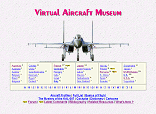Formed from merger on August 9,1929 between Curtiss
Aeroplane and Motor Co Inc. and Wright Aeronautical Corporation. Subsequent production mainly by Curtiss Airplane Division of Curtiss-Wright (aircraft still being
"Curtiss" types rather than "Curtiss-Wright," except for
those with "CW" designations. Travel Air became
another subsidiary in 1930. In 1936 complete reorganisation
dissolved all main subsidiaries except Wright Aeronautical
Division. From 1930 onwards main products
included F9C Sparrowhawk fighter, carried on board USN
airships; F11C/BFC Goshawk for USN and export versions
Hawk I/ II/ III/ IV; SBC Helldivers for USN; SOC Seagull for
USN; BT-32/ CT-32/ T-32 Condor bomber and civil/military
transport; A-8/10/12 Shrike for USAAC; P-36 for USAAC
and export Hawk 75s; one CW-20 prototype (later used
by BOAC); C-46 Commando (USAAF) and R5C (USN) transport
developments of CW-20; CW-21 Demon fighters;
SNC trainers for USN, developed from CW-21; P-40
Warhawk/Tomahawk/Kittyhawk fighters for USAAF and
other Allied services, of which 13,738 built during Second
World War; C-76 Caravan transports for USAAF; O-52 Owl
observation biplanes for USAAF/USN; SO3C Seamew for
USN and Fleet Air Arm; SB2C Helldiver; AT-9 Jeep twin-engined
trainers for USAAF; SC Seahawk scout seaplanes
for USN; Republic P-47 Thunderbolt fighters for USAAF.
Total wartime production (1940-1945) was 26,755 aircraft
and 223,036 aero engines.
After the war many Curtiss factories closed and most
aircraft construction discontinued. Some Boeing B-29
modification undertaken until end of 1945, but Curtiss-
Wright basically then undertook overhaul and repair of aircraft
and manufacture of components, subassemblies and
spare parts. By 1952 was concerned exclusively with production
of aero engines and propellers. At the end of the
1950s Curtiss-Wright made a brief return to aircraft production
with Skydart rocket-propelled target drone and
prototype VZ-7AP VTOL "Flying Jeep" for Army trials. Last
type produced by the company was the X-19A, a six-seat
convertiplane with twin engines driving tandem pairs of
tilting propeller/rotors; first flight June 26,1964, but development
discontinued 1966. By 1970s main activities of
the corporation included nuclear research, data transmission,
and research into new advanced engine designs
for USAF and NASA, although still made components for
Boeing 747 airliners.



